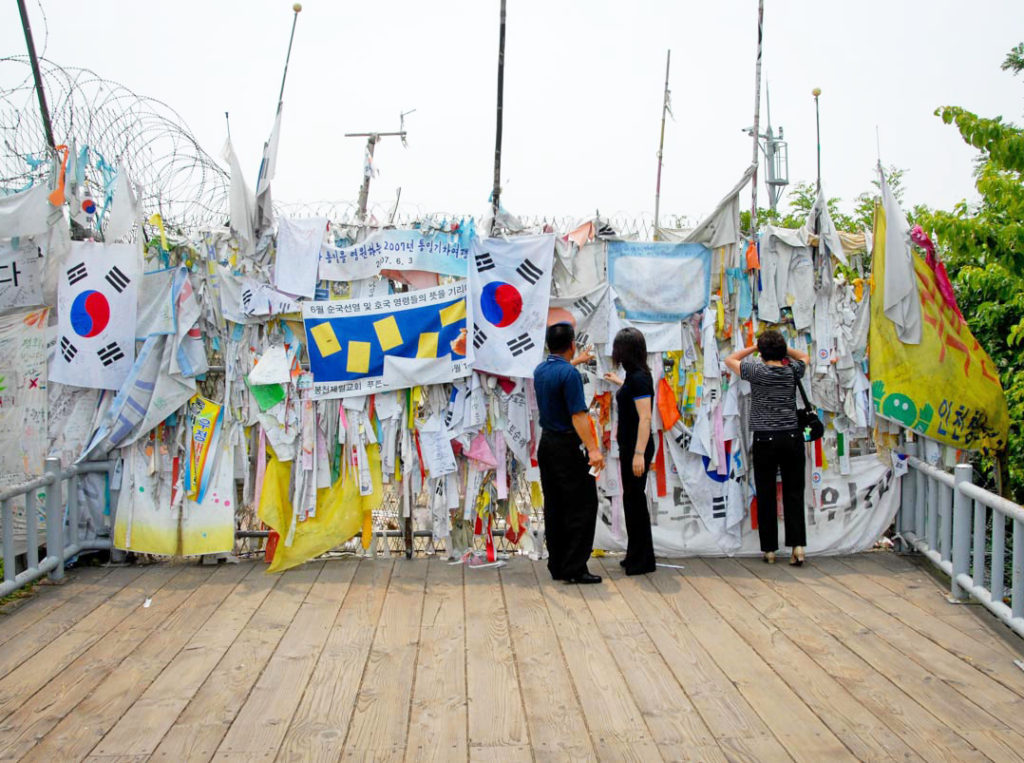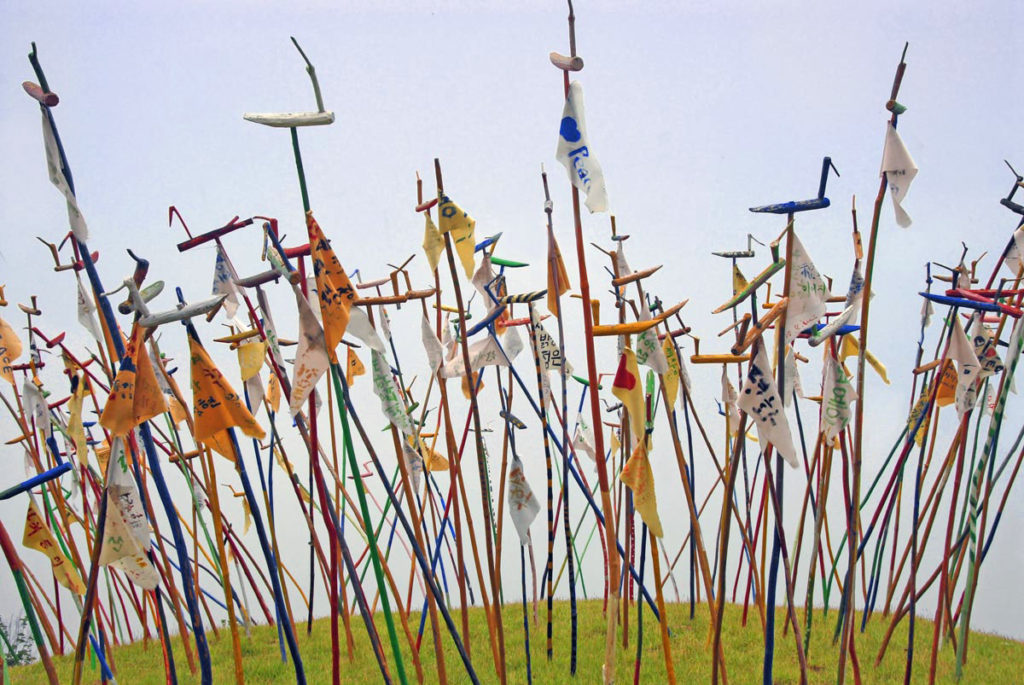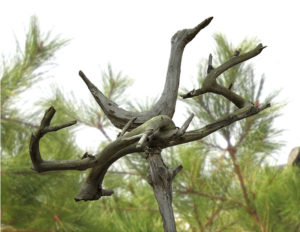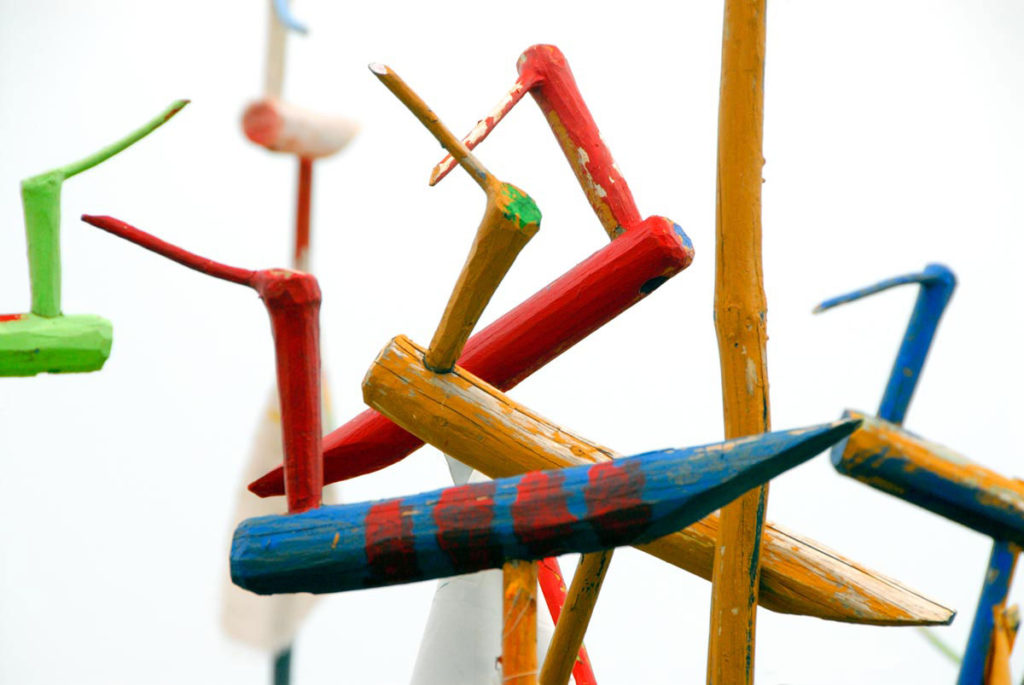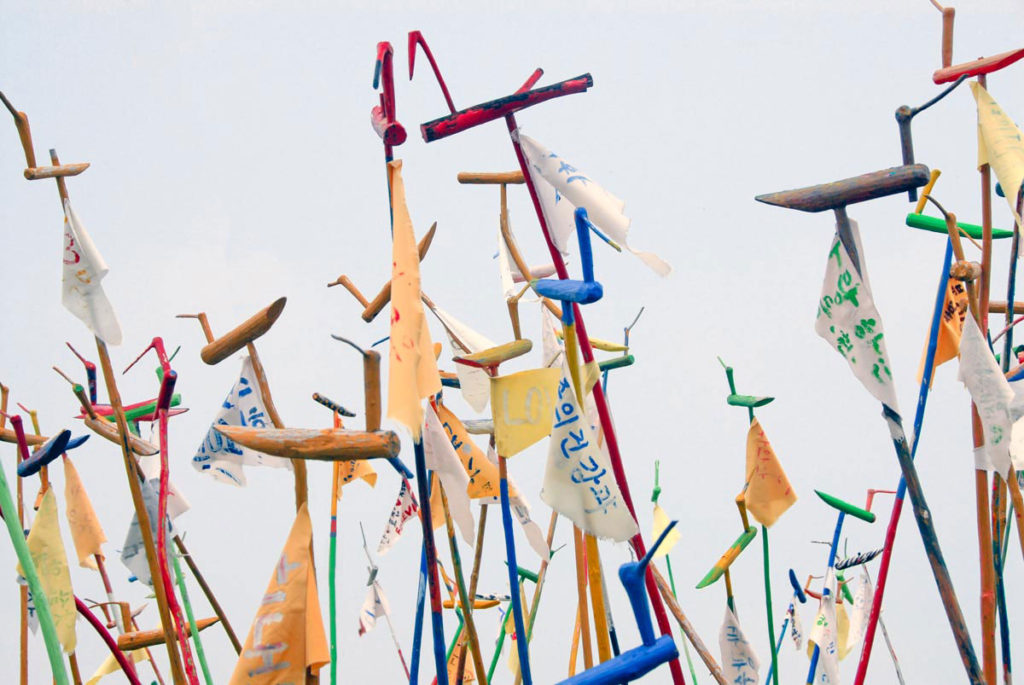

As someone who has had a love affair going on with South Korea for the past 32 years, when I recently heard President Moon Jae-in call this winter’s Olympic Games the “Peace Olympics,” one of my grandmother’s favorite expressions came to mind: “From your lips to God’s ears.”
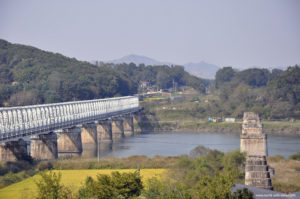 The image of his words floating skyward in a plea for peace brought back something I saw 10 years ago on a trip to the DMZ. We had stopped at Imjingak, a park on the Imjin River, adjacent to the Freedom Bridge, where almost 13,000 South Korean POWs walked to freedom at the end of the war. It was built expressly for that purpose since any bridges that had existed before the war had been destroyed during the conflict, and the surrounding countryside was littered with land mines.
The image of his words floating skyward in a plea for peace brought back something I saw 10 years ago on a trip to the DMZ. We had stopped at Imjingak, a park on the Imjin River, adjacent to the Freedom Bridge, where almost 13,000 South Korean POWs walked to freedom at the end of the war. It was built expressly for that purpose since any bridges that had existed before the war had been destroyed during the conflict, and the surrounding countryside was littered with land mines.
Today the bridge serves as a place of remembrance for families who were separated by the war, especially on holidays such as Chuseok (Thanksgiving) and the Lunar New Year, when it’s customary to honor your ancestors. As a result, the bridge is covered with messages left by South Koreans for family members in the North, both living and deceased.
It’s what I saw in the nearby park that reminds me of my grandmother’s words. Sprouting up from a grassy knoll were hundreds of brightly painted, carved, wooden ducks, mounted on tall poles, with cloth banners attached. Written on those banners were messages of love, and wishes for reunification and peace.
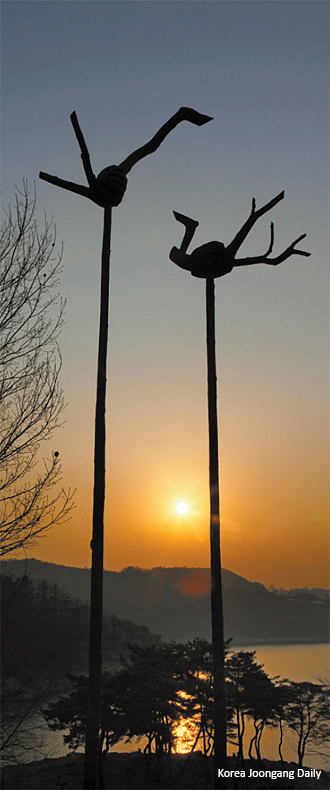 Those ducks, on their tall poles, are called sotdae. They were traditionally placed at the entrance to a village to serve as guardians. Because ducks could travel through the air, on land, and most importantly, both on and under the water, ancient Koreans believed they could control the rain and protect their village from both floods and fire. Sometimes a single duck sat atop the pole; other times there were two or three. If it faced south, it would hopefully bring mild weather good for farming. If north, some much needed rain. Turned away from the village, the duck would take any evil spirits that might be lurking around and fly away.
Those ducks, on their tall poles, are called sotdae. They were traditionally placed at the entrance to a village to serve as guardians. Because ducks could travel through the air, on land, and most importantly, both on and under the water, ancient Koreans believed they could control the rain and protect their village from both floods and fire. Sometimes a single duck sat atop the pole; other times there were two or three. If it faced south, it would hopefully bring mild weather good for farming. If north, some much needed rain. Turned away from the village, the duck would take any evil spirits that might be lurking around and fly away.
People also believed that sotdae carried the souls of the dead to the afterlife and served as messengers between the people and the spirit world. So villagers prayed to sotdae to protect them from harm, to ensure a good harvest, and to bring peace to the village.
And now centuries later, in one of the world’s most precarious locations, the tradition continues. A field full of brightly-colored sotdae stand tall, carrying the wishes of a people longing for peace up to the heavens.
May their journey be a successful one.
Peace.
~ Debbi
(You can learn more about sotdae in Chapter 8 of our book.)

